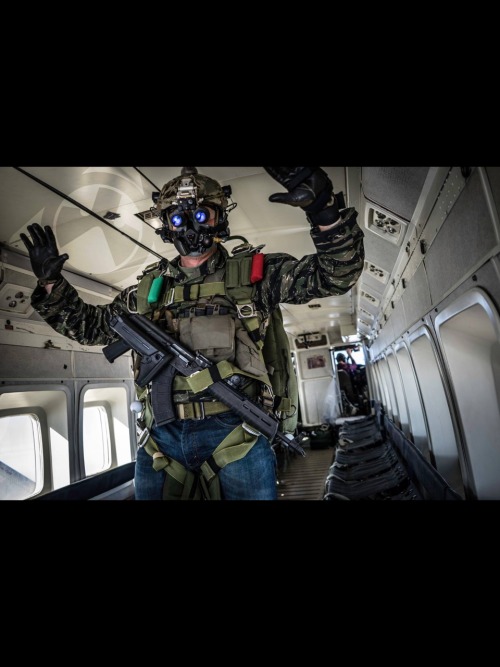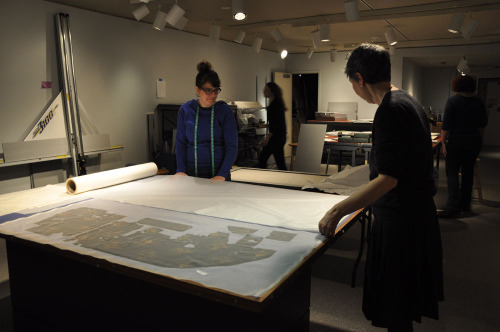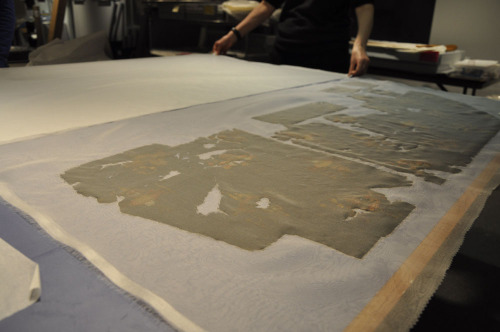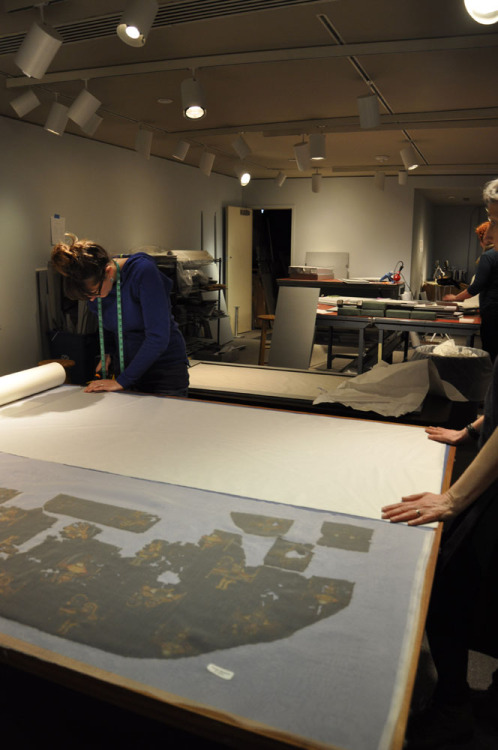#paracas
Several coastal traditions developed during the millennium from 400 BCE to 700 CE in Peru. The most prominent were the Paracas (400 BCE– 200 CE), Nasca ( 200 BCE–600 CE), and Moche (1–700 CE). Together they exemplify the great variations within Peruvian art styles.

PARACAS- The Paracas culture occupied a desert peninsula and a nearby river valley on the south coast of Peru. Outstanding among the Paracas arts are the funerary textiles used to wrap the bodies of the dead in multiple layers. The dry desert climate preserved the textiles, buried in shaft tombs beneath the sands. These textiles are among the enduring masterpieces of Andean art. Most are of woven cotton with designs embroidered onto the fabric in alpaca or vicuña wool imported from the highlands. The weavers used more than 150 vivid colors, the majority derived from plants. Feline, bird, and serpent motifs appear on many of the textiles, but the human figure, real or mythological, predominates. Humans dressed up as or changing into animals are common motifs on the grave mantles.

NASCA- The Nasca won renown for their pottery, and thousands of their ceramic vessels survive. The vases usually have round bottoms, double spouts connected by bridges, and smoothly burnished polychrome surfaces. The subjects vary greatly, but plants, animals, and composite mythological creatures, part human and part animal, are most common. Nasca painters often represented ritual impersonators, some of whom, like the Paracas flying figures, hold trophy heads and weapons.

Nasca artists also worked on huge scale. There are over 800 miles of lines drawn on the dry surface of the Nasca plains. Their colossal size defies human perception from the ground. Today are about three dozen images of birds, fish, and plants hundreds of feet long. They also drew nonfigural designs like trapezoids, spirals, and straight lines. Artists produced these Nasca Lines by removing the top layer of stones to expose the lighter materials below. (read more about them here)

Moche- The Moche occupied a series of river valleys on the northern coast of Peru. Their culture was sophisticated and their artifacts express their lives with incredible detail. Their art depicted hunting, fishing, fighting, sacrifice, sexual encounters and elaborate ceremonies Only the Greeks and Maya surpassed them in regards to how much information we can glean from their civilization at the time. Most famous are the painted clay vessels of the Moche. The vessels are predominantly flat-bottomed, stirrup-spouted jars derived from Chavín prototypes. The potters generally decorated them with a bichrome(two-color) slip. Although the Moche made early vessels by hand without the aid of a potter’s wheel, they fashioned later ones in two-piece molds.

Elite men, along with retinues of sacrificial victims, appear to be the occupants of several rich Moche tombs excavated near the village of Sipán on the arid northwest coast of Peru. The Sipán burial sites have yielded a treasure of golden artifacts and more than a thousand ceramic vessels. The discovery of the tombs in the late 1980s created a great stir in the archaeological world, contributing significantly to the knowledge of Moche culture.

(x)
Bottle with Incised Geometric Figure, Paracas, -650,Art Institute of Chicago: Arts of the Americas
Gift of Nathan Cummings
Size: 17.8 × 12.7 cm (7 × 5 in.)
Medium: Ceramic with resinous postfire paint
Post link
Chief Conservator Esther Méthé supervises conservation intern Annaïck Keruzec as she cuts tissue for a custom mount. The mount will help secure a very fragile oversize fragment that Méthé and Keruzec have encased in silk crepeline for stabilization.
- Mantle fragments, Peru, south coast, Paracus. TM 91.337A. Acquired by George Hewitt Myers in 1941.
Post link
Bottle with Incised Geometric Figure, Paracas, -650,Art Institute of Chicago: Arts of the Americas
Gift of Nathan Cummings
Size: 17.8 × 12.7 cm (7 × 5 in.)
Medium: Ceramic with resinous postfire paint
Post link










